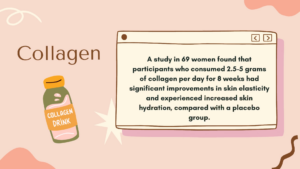The pursuit of radiant skin and overall beauty has grown beyond traditional skincare products to embrace holistic approaches in recent years. One powerful strategy for this is to include more plant-based meals in your diet. Plant-based diets, filled with fruits, vegetables, legumes, nuts, and seeds are good for your health and enhance a perfect complexion. This guide highlights many benefits of plant-based eating and gives practical tips on how to effortlessly incorporate these meals into your daily routine.
The Benefits of Plant-Based Diets for Skin and Health
Radiant Skin
A diet abundant in plant-based foods cannot fail to improve skin health significantly. Fruits and vegetables are highly rich in vitamins, minerals, and antioxidants which counter inflammation and oxidative stress two leading causes of aging signs on the skin. For example, carotenoid pigments like beta-carotene found in carrots and sweet potatoes convert to vitamin A thus promoting cell turnover which results in healthy-looking skin. For instance, citrus fruits such as oranges and grapefruits contain a lot of Vitamin C which aids collagen production hence firmness and elasticity of the skin.
Improved Digestion
A healthy gut is the foundation stone for total well-being as well as a beautiful body. Plant-based diets have high fiber content that keeps the digestion system healthy. Fiber ensures regular bowel movements preventing problems like bloating or constipation that could give giving dull appearance to your skin. In addition, a flourishing gut microbiome fed by plant fibers improves nutrient uptake hence directly influencing your skin health.
Reduced Inflammation
Chronic inflammation is associated with various skin conditions such as acne, eczema, and premature aging among others. Plant-based foods have anti-inflammatory properties due to the presence of flavonoids such as berries’ anthocyanins and green tea’s epigallocatechin-3-gallate (EGCG) plus omega-3 fatty acids found mainly in flaxseeds or walnuts among others; they are effective against inflammation thus resulting into clearer complexion
Practical Tips for Incorporating Plant-Based Meals
Start with Breakfast
Breakfast provides an opportunity to enjoy nutrient-rich plant-based foodstuffs. Consider smoothie bowls that consist of spinach, bananas, berries, and a scoop of plant-based protein powder. Another simple yet nutritious option is overnight oats made with chia seeds, almond milk, and fresh fruits.
Embrace Meatless Mondays
One day per week may be set aside as a meatless day to get used to the idea of a life without animal-based products. Experiment with different dishes such as lentil soup, chickpea curry, or stir-fried vegetables. This method will make you familiarize yourself with new tastes and foods without being overwhelmed.
Snack Smart
Replace processed snacks with healthier plant-based alternatives. For instance, have some nuts, seeds, and dried fruits in your drawer or handbag while at work. Satisfying options that provide essential nutrients include hummus with carrot and cucumber sticks, apple slices topped with almond butter, or trail mix in handfuls.
Experiment with Plant-Based Proteins
Proteins are important constituents of diets and there are many sources of them among plants. Incorporate into your meals beans, lentils tofu tempeh quinoa etc. These can be used for preparing salads soups stir fries casseroles among other things since they are very versatile foodstuffs.
Cook with Herbs and Spices
Herbs and spices are not only flavor enhancers and packed with antioxidants and anti-inflammatory properties. Incorporate some fresh herbs like basil, cilantro, and parsley into your meals. Experiment with spices such as turmeric, ginger, and cumin to add depth and health benefits to your dishes.
Sample Plant-Based Meal Plan
Breakfast: Green Smoothie Bowl
- Ingredients: 2 handfuls baby spinach; two frozen bananas; 1 c mixed berries; 1 c almond milk (or any non-dairy milk); 1 tbsp chia seeds; granola for topping
- Blend the spinach, bananas, berries, and almond milk until it becomes smooth then pour into a bowl and sprinkle with chia seeds and granola.
Lunch: Quinoa and Black Bean Salad
- Ingredients: quinoa, black beans, corn, cherry tomatoes, red onions, avocados, cilantro leaves, lime juice, olive oil. Salt and pepper.
- Method: Prepare quinoa according to package instructions; combine with chopped cherry tomatoes and diced onions in a large mixing bowl. Drizzle with olive oil and lime juice; season with salt and pepper and toss well. Serve garnished with cilantro. Leaf through the pages of this book to get enough knowledge about these recipes that guide you on how to make delicious plant-based meals.
Dinner: Chickpea and Vegetable Stir-Fry
- Ingredients: chickpeas/bell peppers/broccoli/carrots/sugar snap peas/soy sauce/garlic/ginger/brown rice.
- Method: Sauté minced garlic together with ginger in a pan; stir in vegetables until they start becoming tender. Add chickpeas together with soy sauce. Serve over cooked brown rice.
Snacks
- Morning: Almond butter spread onto sliced apples.
- Afternoon: Hummus for carrot sticks.
Overcoming Challenges
Nutrient Concerns
Some people worry that they won’t get enough protein iron or vitamin B12 while eating a whole foods plant-based diet which is How People Become Vegans for Beginners cookbook. To avoid this concern you should eat a wide variety of food sources including leafy greens like kale spinach chard collard greens mustard greens bok choy watercress broccoli etc nuts seeds fortified plant milk like soy almond hemp rice hazelnut or oats are also available which are great for getting these nutrients plus there is always the option of taking B12 supplements as it occurs naturally only in animal products – meat eggs dairy fish crustacean shellfish etc.
Social Situations
Sometimes you have to eat out or go to parties when you are trying to stick to a plant-based lifestyle. You should plan for such situations, for instance, by checking online menus in advance or bringing along a plant-based plate. Most places these days even have plant-based menu options which makes it easier not only to stay true to your food preferences by avoiding any animal products but also enjoying the outing.
Conclusion
You can move towards better health and glowing skin by adding more plant-based meals to your meal plans. You don’t need to feel overwhelmed about this change; start incorporating a little bit of them in your regular diet and see how you feel. Gradually, you may see the advantages of eating plants as well as their beauty benefits on our faces and body. Let us embrace the journey of becoming more vibrant and radiant versions of ourselves.








